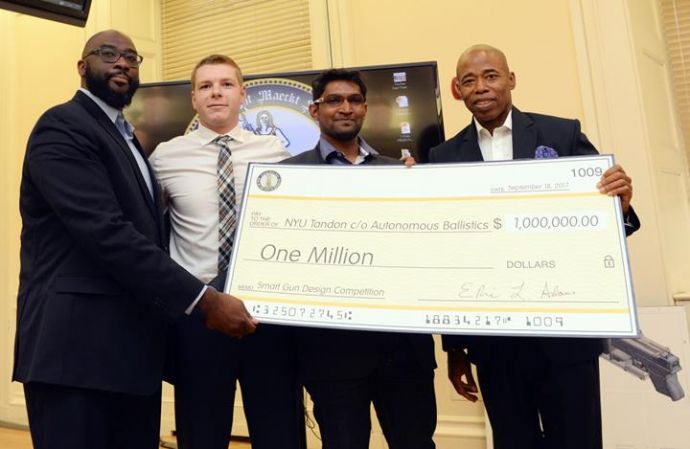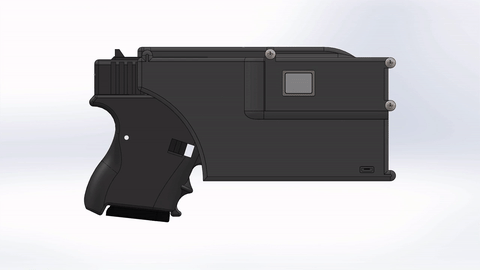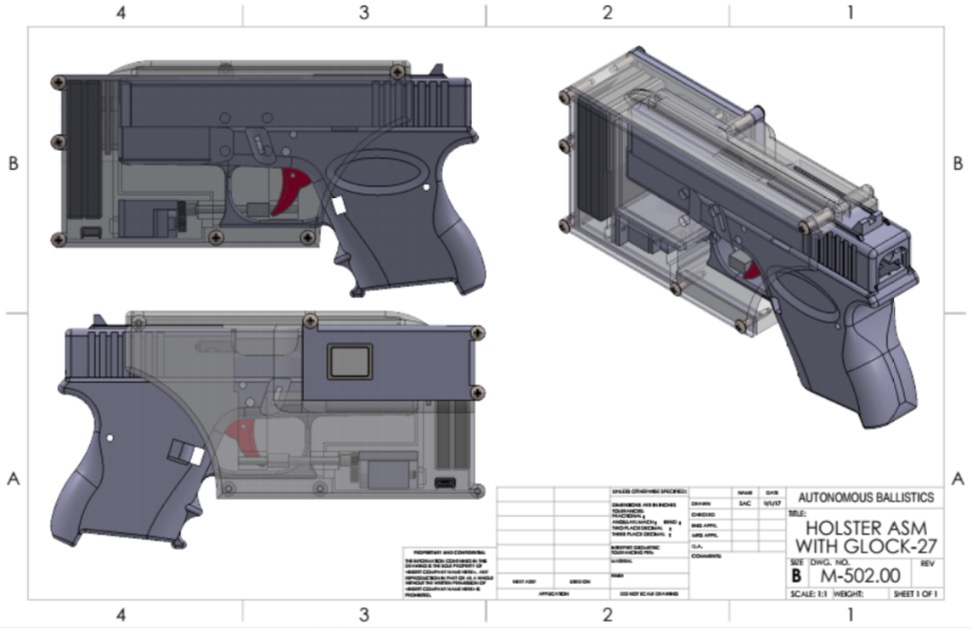The technological advancement of firearms over time has been all about lowering the barrier to entry of killing people. A new project, from the students of NYU Tandon, just won a $1 million prize to innovate in the opposite direction.
The team, which calls itself Autonomous Ballistics, have developed a prototype for a gun holster which would not be able to release its gun unless some criteria were first met, including a fingerprint scan, a voice password and a nearby RFID chip.
“Hopefully, with this we can reduce accidental gun death rates,” explained Jonathan Ng, a member of the Tandon team who graduated in 2016. “That was the main problem.”

Brooklyn Borough President Eric L. Adams (right) and NYU Tandon’s Autonomous Ballistics team. (Photo courtesy of Erica Sherman/Office of the Brooklyn Borough President)
In September, the team won the $1 million Smart Gun Design Competition, presented by Brooklyn Borough President Eric Adams. The goal of the competition was to drive innovation and awareness on the issue of the unauthorized use of firearms. Smart gun technology has been available for over a decade but has faced stiff headwinds from the gun lobby over reliability concerns.
The way the NYU team’s prototype works is that the gun’s holster, which is made to be worn on the waist, won’t release the gun without a fingerprint scan of the owner, similarly to how the iPhone works. But that’s not foolproof. If it’s raining or the user’s hand is sweaty or if it’s winter and they’re wearing gloves, or if the user doesn’t line his finger up precisely, the mechanism won’t work. Since the team’s primary users, at least at first, will be police officers, who might need access to their guns quickly, the team built backup mechanisms for the fingerprint. The first backup is an RFID chip implanted in the officer’s badge, which would allow the gun to unlock only in close proximity to the badge. The second is a voice password that officers could set with the holster which would override an incomplete fingerprint match. Each of these, it would seem, would also have applications beyond the police as well.
The group (besides Ng) includes team leader Sy Cohen, a Class of 2017 alumnus with a degree in mechanical engineering, Ashwin Raj Kumar, a Ph.D. candidate in the Department of Mechanical and Aerospace Engineering, and Eddilene Paola Cordero Pardo, an officer in the Colombian Navy and a master’s degree student majoring in technology management. The group’s faculty mentor is Adjunct Professor Anthony Clarke.
Ng said the holster prototype is about 80 percent finished, and the prize money will be used for testing and upgrades to it.
“We’re going to spend on more testing to make sure it works, structurally,” he said. “It will have to have durability for drops. Reliability is the number one issue and speed is the other, and they go hand in hand, you can’t sacrifice one for the other. Hopefully we can use the money on production as well.”
Join the conversation!
Find news, events, jobs and people who share your interests on Technical.ly's open community Slack

